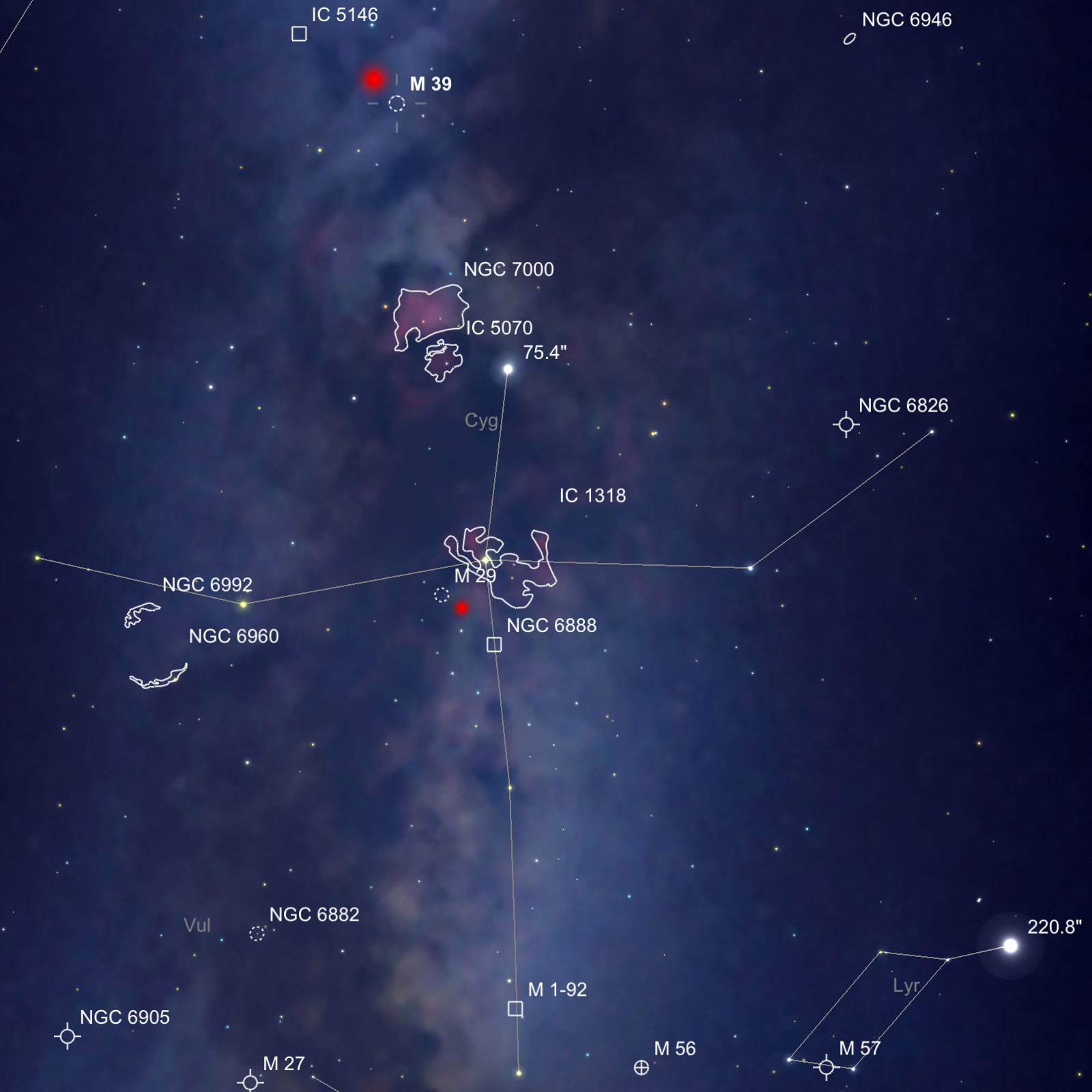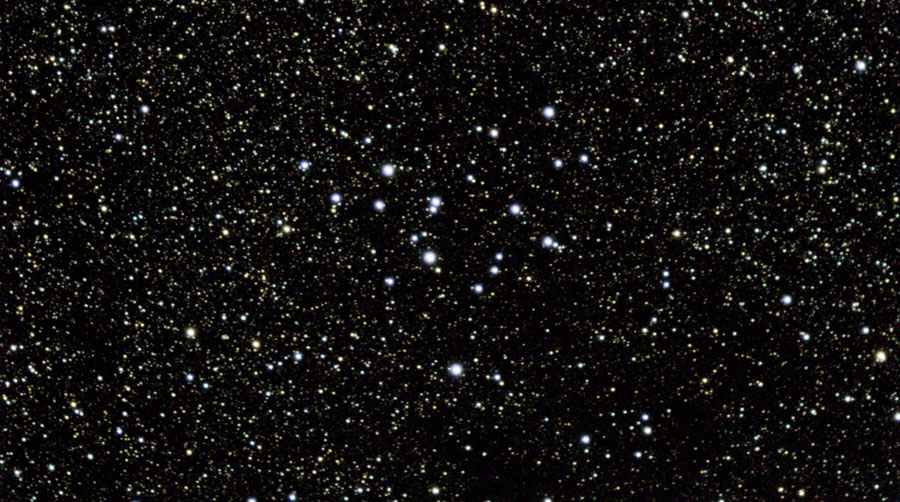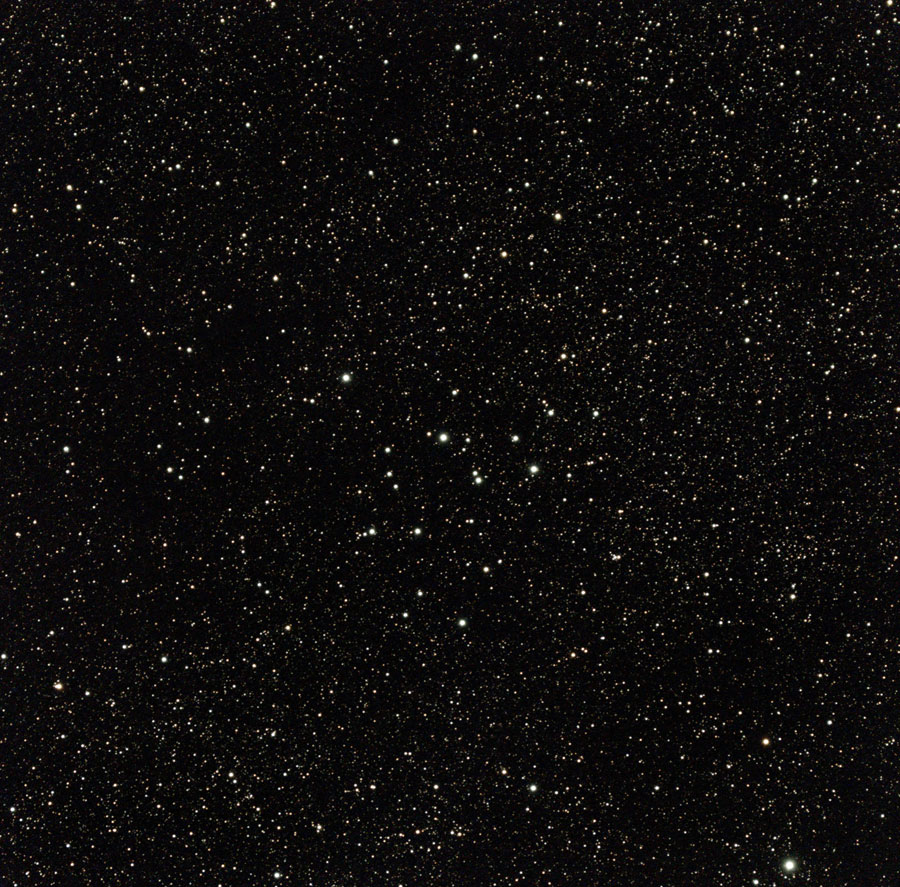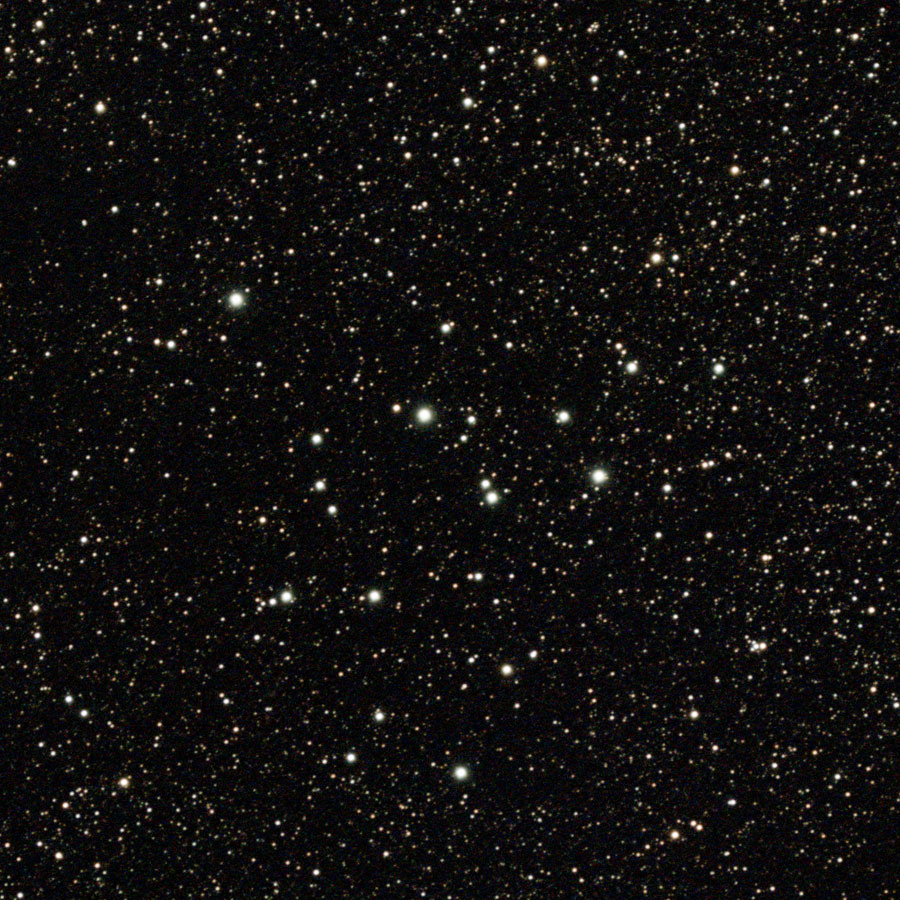
Introduction | Map | Find/Identify | My Own Photos | My Own Observations | References
On this page I collect my observations of the open star cluster M 39 (NGC 7092) in the constellation Cygnus/Swan.
The open star cluster M 39 in the constellation Cygnus/Swan is more an objects for binoculars, whereas Stoyan and Karkoschka have different opinions about the look in the telescope. For me, it looks like a triangle...
M 39 (NGC 7092)
Size: 31' (Stoyan) - about the size of the moon
Distance: 1,060 Light years (Stoyan)
Rating: * (Stoyan)
The open star cluster M 39 on top of Cygnus, M 29 is also indicated (Image Courtesy of SkySafari Astronomy, www.simulationcurriculum.com)
Find: First of all, it is best to look for the "swan triangle" (blue lines), which lies in the West in winter, as shown on the map below. The bright star Deneb at the top of this triangle is the most striking one. Below it lies the star Gamma Cygni. If you draw a slightly oblique line from it to Deneb and extend it by about the same length again to form an obtuse triangle (both lines in red on the map), then the open star cluster M 39 in the constellation Cygnus/Swan lies in the upper corner of the triangle. This reads more complicated than it is!
Identify: If you now see a somewhat triangular large star cluster, then you have already found M 39 and identified it! (Image Courtesy of SkySafari Astronomy, www.simulationcurriculum.com)
 |
M 39, Sep 30, 2022 - original (13 frames = 130s) |
 |
 |
|
M 39, Nov 5, 2024 - 2000 (90 frames = 15 min) |
M 39, Nov 5, 2024 - 2000 (90 frames = 15 min), processed |
|
 |
 |
|
Evaluation with nova.astrometry.net (section right) |
M 39, Nov 5, 2024 - 1800 (90 frames = 15 min), section processed (TIFF) |